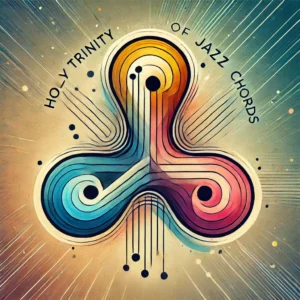How to play 7th chords.
The most confusing chords for many music students
Major, Minor, and Dominant 7th Chords Finally Explained!

Today’s video on 7th Dissonance covers an area that even many experienced musicians often mix up. This is one aspect of piano harmony that really trips people up. Many students, despite playing piano their entire life, still have ABSOLUTELY no idea about the different functions of these 7th chords.
By mastering and knowing the content in this video I’m about to share with you, you are going to be light-years ahead! Get your notebook out, this is not just any YouTube tutorial. This is the foundation of all the music we enjoy and listen to in all genres. The example I use at the end of this video is Gershwin’s “Summertime,” a perfect example of these beautiful chords.
How to play 7th chords : Three Types of Chords
Let’s break down the three types of 7th chords that are most commonly used in music: major 7th, minor 7th, and dominant 7th chords. Understanding these will unlock a whole new world of harmonic possibilities in your playing.
Major 7th Chords
A major 7th chord is built by adding a major seventh interval to a major triad. For example, a C major 7th chord (Cmaj7) consists of the notes C – E – G – B. This chord has a smooth and mellow sound that is commonly used in jazz, pop, and even some classical music.
- Examples of Major 7th Chords:
- Gmaj7: G – B – D – F#
- Dmaj7: D – F# – A – C#
- Fmaj7: F – A – C – E
These chords are often used in genres like bossa nova and smooth jazz to create a laid-back, relaxed vibe. You’ll hear these lush harmonies in songs like “Misty” by Erroll Garner and “Just the Two of Us” by Grover Washington Jr.
Minor 7th Chords
A minor 7th chord is formed by adding a minor seventh interval to a minor triad. For instance, a C minor 7th chord (Cm7) includes the notes C – Eb – G – Bb. The minor 7th chord has a slightly more somber and bluesy feel compared to its major counterpart.
- Examples of Minor 7th Chords:
- Am7: A – C – E – G
- Dm7: D – F – A – C
- Em7: E – G – B – D
Minor 7th chords are prevalent in blues, funk, and jazz. They provide that soulful, melancholic touch to tracks like “Autumn Leaves” and “Ain’t No Sunshine” by Bill Withers.
Dominant 7th Chords
The dominant 7th chord is built by adding a minor seventh interval to a major triad. For example, the C7 chord is made up of C – E – G – Bb. This chord has a strong, bluesy sound that demands resolution, making it a cornerstone of jazz, blues, and many other musical styles.
- Examples of Dominant 7th Chords:
- G7: G – B – D – F
- A7: A – C# – E – G
- E7: E – G# – B – D
Dominant 7th chords are key to creating tension and release in music, leading the listener’s ear back to the tonic or home chord. You’ll find these chords in countless jazz standards and blues tunes, including “Stormy Monday” and “Sweet Home Chicago.”
How to play 7th chords in Jazz and Blues
To add a 7th dissonance to any chord, count seven notes above the root note of the chord. For example, adding a B to a C major chord makes it a Cmaj7, which gives it that warm, rich sound. This concept is used extensively by artists like Alicia Keys, who often employs 4-7, 3-7, 2-7, 1-7 progressions in her songs.
Dissonance brings complexity and emotion to your music. When used properly, it can transform a simple chord progression into something beautiful and expressive. Experiment with adding a 7th to your chords to see how it changes the character of your music.
Watch Our In-Depth Tutorial on how to play 7th chords
If you want to see these chords in action and learn more about their application in different genres, make sure to watch the video below. It’s packed with examples and exercises that will help you master the art of 7th chords:
Conclusion: How to play 7th chords
Understanding major, minor, and dominant 7th chords can transform your playing, taking it to a whole new level. These chords are the building blocks of jazz, blues, and countless other genres. Practice them in different keys, use them in your improvisation, and explore the magic they bring to music. Keep experimenting, and soon you’ll be able to create those lush, sophisticated sounds you hear in your favorite tracks.
Don’t forget to practice these chords using finger exercises as shown in the video. Incorporating 7th chords into your daily practice routine will greatly enhance your fluency and musicality. Happy playing!
If you’d like to request our free resources kit with materials on how to play 7th chords, visit www.contemporaryschoolofpiano.com to request our free resources kit. You can also watch another in-depth tutorial on this topic via our YouTube channel, with even more exciting examples. The more you get to practice this the better! How to Play 7th Chords Follow-Up Tutorial on YouTube
